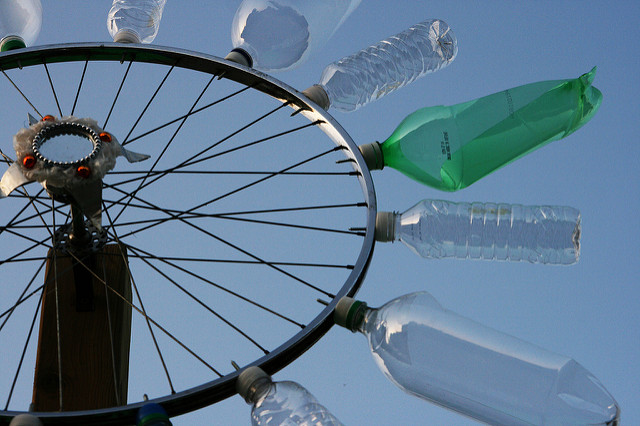
How bottled water stops making sense.
The bottle of spring water you drink may not be coming out of a spring.
I recently moved from the Midwest to a quiet town in Florida named, Zephyrhills. The same name as the famous bottles of water I had seen on the store shelves and in the convenient stores. They advertise that it comes from a pure crystal spring, near where I live.
I was excited to know more about the natural spring water and the bottled water company. I am health and environmentally conscious, and I happened to find myself living in the nostalgic town of the bottled water’s namesake.
The more I talked to people in town, the more I came to hold a disenchanted view of what really was happening. I researched further and further, wanting to know more about the famous water.
What I found was just the tip of the iceberg, and it seemed as though we were all on the Titanic.
Here is what I have recently discovered about this little town’s booming industry:
In November 1995, the FDA began allowing bottlers to call well water “spring water” if the source had the same “composition and quality” as the spring.
Zephyrhills, a brand owned by Nestle, might be labeled as natural spring water but the water could be coming from other various sources. The water may, in fact, come from a well that has been dug by the conglomerates and simply labeled as spring water. In 2008, the Orlando Sentinel dug up the truth of their labelling practices while questioning the loopholes large water companies use to promote natural spring water. Jon Dinges, a resource-manager for the local water district, says what Nestle bottles at its Madison County plant “is well water.”
In fact, the Environmental Working Group gave Zephyrhills Spring Water a “D” and gave Nestle an overall “D” on its “2011 Bottled Water Scorecard Report,” claiming that the company, along with multiple others, obscures the basic data about their product.
Marketing has encouraged consumers to believe that bottled water is held to higher standards than tap water, but is this actually true?
The standards for bottle water pollution versus tap water are identical—with the exception of lead. The FDA is three times stricter about the lead allowed in bottled water because the EPA takes into account older homes with lead pipes.
The price of bottled water versus tap water is 300 times more. Why are we paying this?
“The [bottled water] industry grossed a total of $11.8 billion on those 9.7 billion gallons in 2012, making bottled water about $1.22/gallon nationwide and 300 times the cost of a gallon of tap water,” Colas says. “If we take into account the fact that almost two thirds of all bottled water sales are single 16.9oz (500 mL) bottles, though, this cost is much, much higher: about $7.50 per gallon, according to the American Water Works Association. That’s almost 2,000 times the cost of a gallon of tap water and twice the cost of a gallon of regular gasoline.”
What about the ecological cost? The Bottled Water project states that it takes over 1,000 years for plastic water bottles to biodegrade, and that 80 percent of bottles become “litter” in the U.S. Further only one in five bottles is recycled. The amount of oil used by the bottled water industry could provide power for 100,000 people for a year and, most shockingly, it is estimated that it takes three liters of water to package one liter of bottle water!
What can you do to help?
1. Buy a reusable (non-plastic!) water bottle.
2. Take a stand. Contact your representatives in Congress, the FDA, and your state governor. Ask them to help maintain high standards for tap water.
3. Do not reuse plastic water bottles. (They may leach chemicals).
4. Support initiatives to ban water bottles.
5. If you have to buy it, choose water that comes from a protected source and make sure to recycle.
Sign up for Take back the Tap and take the pledge to support tap over bottled water.
By purchasing bottles of water, we receive a false sense of comfort, and a convenience in packaging. But, is it worth it?
Sources:
1. That Zephyrhills spring water might not come from Zephyrhills
2. 2011 Bottled Water Scorecard
3. You Are Paying 300 Times More for Bottled Water than Tap Water
4. In a Thirsty World Bottled Water Seems Wasteful
˜
Author: Angela Prosser
Image: Flickr/Quinn Dombrowski
Editors: Travis May; Lindsey Block






Read 1 comment and reply